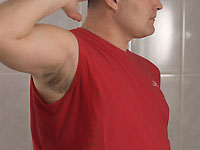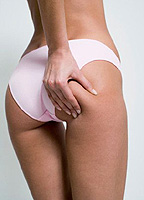What are the surgical methods of treating increased sweating? What are these methods?
Content
All methods of treating hyperhydroposis can be divided into two large groups - conservative and surgical. There are only about two dozen treatment methods. Some of them have extremely historical importance.
This small operation, which is carried out through a tiny hole in the skin forever and completely and eliminates the unpleasant symptoms of hyperhydroposis. Those who are bothering the tightness of the armpits, as well as all curious, we offer an overview of other methods of treatment.
Operational interventions in hyperhydrosis can be divided into two large groups - «Distance» and «Local». The second group suggests «Work» Surgeon directly B «wet place». The first group involves interference on some «Distance» from «wet» Places. Such operations include sympathectomy. Currently, there are several options for these operations, each of which we will give a brief description. So, in order of importance.
Remote methods
 Endoscopic sympathectomy. To date, this operation is considered optimal interference with hyperhydrosis, as well as a number of other states related to «wrong» work of the sympathetic nervous system. Through a small puncture in the skin inside the chest is injected with a thin tube with a miniature video camera. The image is displayed on the big screen. Special tools are introduced through the same holes. For a few minutes, the surgeon reaches under the control of the vision of the required zone and imposes a metal clips to the paravertelectral ganglium section or crosses the sympathetic barrel with a special tool. This method uses the main advantages of video photocopy operations. Endoscopic sympathectomy is performed, as a rule, when palm. To a lesser extent it affects the work of the armpits. Simpatectomy is not used in the treatment of sweating legs. It is known that lumbar sympathectomy causes impotence.
Endoscopic sympathectomy. To date, this operation is considered optimal interference with hyperhydrosis, as well as a number of other states related to «wrong» work of the sympathetic nervous system. Through a small puncture in the skin inside the chest is injected with a thin tube with a miniature video camera. The image is displayed on the big screen. Special tools are introduced through the same holes. For a few minutes, the surgeon reaches under the control of the vision of the required zone and imposes a metal clips to the paravertelectral ganglium section or crosses the sympathetic barrel with a special tool. This method uses the main advantages of video photocopy operations. Endoscopic sympathectomy is performed, as a rule, when palm. To a lesser extent it affects the work of the armpits. Simpatectomy is not used in the treatment of sweating legs. It is known that lumbar sympathectomy causes impotence.
Open sympathectomy or traditional sympathectomy. The cut of the skin and tissues is carried out on the back surface of the chest. Standard thoracotomy is performed, the ribs of the surgeon dispels the fabric, it detects the paravertebral barrel and bandages the required node. Traumatic access, which subsequently forces to be on the hospital bed for several days, and then limits the patient's activities for several weeks, forced surgeons to look for other ways to intervene.
Percutaneous sympathectomy Performed with thin needles that are summed up to the paravertebral trunk. The introduction of special chemicals or the destruction of nerve nodes by means of current leads to the same effect as at open sympathectomy. Nevertheless, these interventions did not find much popular in connection with frequent «Promachami». After all, we bring the needle to the required point without vision control is not so easy.
Local methods
Local or local surgical interventions have found an application in the treatment of insulated axillary hyperhydroposis, when the increased sweating is observed exclusively in the axillary region.
Liposuction of the axillary depression. With a small tube, which is injected through a point hole, an axillary fiber is removed. The destruction of the sympathetic nerves passing in it leads to a violation of the streams of nerve impulses to potted glands. This method is largely shown to complete patients. Many patients attract the so-called ultrasonic liposuction. The method is widely used in plastic surgery and allows you to make liposuction to a more complete amount with a slightly smaller trauma. Unfortunately, for the treatment of axillary hyperhydrogen, except for the high cost of the procedure, nothing is added.
Curetzh (scraping) Mortal depression differs from liposuction in that instead of removing fat is carried out «scraping» zones where sweat glands are located from the inside. As a result, the destruction of small nerves and damage to sweat glands. This method is used most often. The enhancement of the curette is video mass system, which allows you to slightly reduce the probability of hematoma and the accumulation of fluid in the postoperative period.
The excision of the axillary zone It provides for the removal of the skin, where the bulk of the sweat glands is located. Despite the simplicity of intervention, such operations were not widely used due to the fact that the resulting scars reduce the volume of movements subsequently. This method is used somewhat less often due to traumaticity, but it is the best in recurrent hydrabenitis - diseases of the apocryne sweat glands («bitch duc»).









